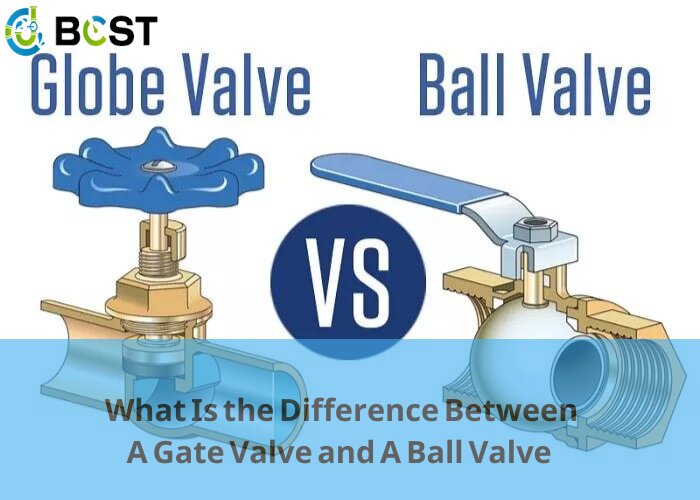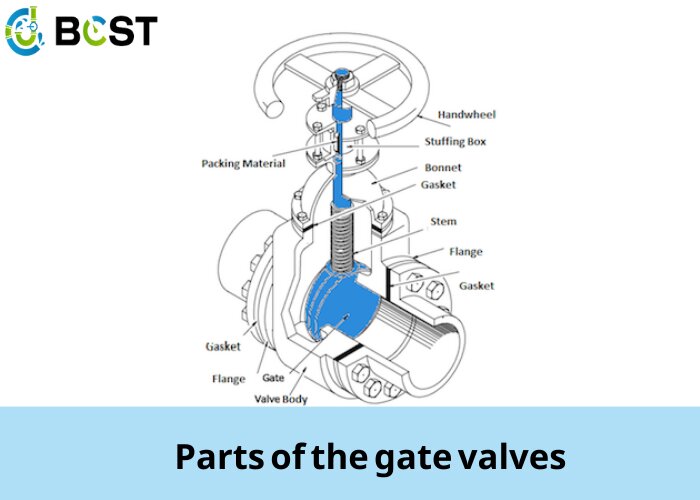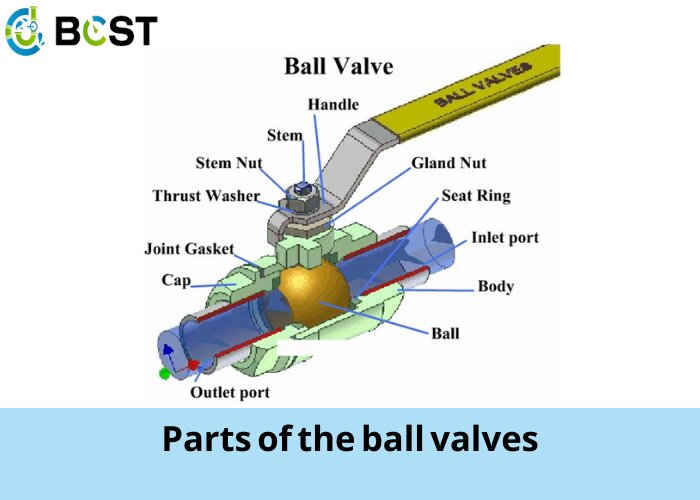
Valves are an important part of many industrial and commercial applications. We use them to regulate the flow of fluids or gases, from the car to the sprinklers. You can see everywhere. Valves control the flow of fluids, allowing them to start and stop. They must be properly maintained to prevent leaks and accidental discharges. There are many different types of valves, but the most common are ball valves or gate valves. Both of these valves serve the same purpose. However, their structural characteristics are quite different.
The most common valve used in water supply systems is the gate valve. This linear motion valve allows or stops the flow of water. These valves are not suitable for flow regulation. They can only be opened or closed completely, as a partial opening may cause damage. The word “Gate valve” has its origins in the fact, that the valve will slip into the fluid to form a closure, it plays the role of a gate when closed.
The gate valve is one of the most popular valves because it is simple and common. By design, gate valves have full ports. This means that the valve port size is equal to the inside diameter of the connecting pipe. A full port gate valve allows fluid to flow unobstructed without creating a pressure drop in the pipeline. It also allows the pipeline to be cleaned using a cleaning rod.

A ball valve utilizes a rotatable orifice and a ball to regulate the flow of liquid or gas from one end to the other. It can either allow media to flow through, or it can stop media from flowing through by rotating the ball a quarter turn (90 degrees) near its axis. These valves control flow by allowing partial inlet, blocking inlet, or opening inlet. Ball valves are best suited for gases because of their stronger seal. They can withstand pressures up to 700 bar and temperatures up to 350 degrees Celsius. They are available in sizes ranging from 0.5 cm to 30 cm. Ball valves are simple in construction and easy to maintain and use.
Ball valves are durable and reliable. They close securely even during periods of inactivity. Compared with other types of valves, they are more resistant to contamination Type of valves seal well even when the medium is dirty. They are a good choice among control and cut-off applications of the regular use of globe and gate valves. However, they lack accurate control in throttling applications.

Gate and ball valves: what are their differences?
Work
Both types of valves serve the same purpose of controlling the flow of fluid through a pipeline, but they do it in different ways. The gate valve can use the remote gate plate to open and close the fluid. Rising or lowering the gate valve can make the fluid flow through the pipe. Gate valves are usually used in larger-diameter pipelines and can withstand higher pressures than ball valves. A ball valve uses a ball with a hole in the center to control fluid flow. Rotating the ball aligns the hole with the direction of fluid flow. Ball valves are typically used for smaller diameter piping Ball valves are typically used for smaller diameter piping and cannot withstand the higher pressures that gate valves can.
Valve Flow Direction
For systems with one-way flow, gate valves are the best choice. Gate valves are also ideal for applications where a large amount of fluid needs to pass through quickly. On the other hand, ball valves are better suited for bi-directional flow applications. Ball valves are also easier to operate than gate valves, making them the best choice for applications that require frequent opening and closing of the valve.
Valve Sealing Capability
Gate valves are designed so that the disc seals completely when the valve is closed. This makes them ideal for high-pressure applications where leak-free sealing is critical. On the other hand, ball valves have a small hole in the center of the valve disc. Compared to gate valves, ball valves open and close faster, but this also means that they seal-less effectively in high-pressure situations.
Valve design and construction differences
Gate valves are typically used for liquids and gases, while ball valves are more suitable for liquids. Gate valves have a circular gate that opens and closes to allow or stop the flow of fluid, while ball valves have a sphere that does the same thing. Both types of valves can be used for a variety of applications, but they each have their advantages and disadvantages.
Gate valves are usually cheaper and easier to repair, but they are not as durable as ball valves. On the other hand, ball valves are more expensive and more difficult to repair, but are more durable and can withstand higher pressures.
Valve Material
Gate valves are made from one solid piece of material. It is usually metal with an opening in the center. On the other hand, a ball valve is made of a hollow ball with a hole drilled in the center. This ball is connected to two handles through which the user can open and close the valve.
APPLICATIONS
The design of the gate valve is to open quickly and close quickly, however, the design of the ball valve is to provide a tight seal. Gate valves are typically used in applications that require quick opening and closing, while ball valves are typically used in applications that require a tight seal.
Durability
Gate valves are typically more durable than ball valves because they have fewer moving parts and are less susceptible to corrosion damage. Ball valves are more prone to leakage over time, but are also easier to repair if a problem occurs.
At last, the decision on which type of valve to use depends on specific needs and preferences. If the need is for a valve that can withstand a lot of wear and tear, then a gate valve is a good choice. If ease of repair is more important, then a ball valve may be a better choice.
Are ball valves better than gate valves?
Function: a ball valve is a quarter-turn valve that controls the flow of water through a ball with a hole in the center. To open and close the valve, the ball is attached to a handle. A gate valve, on the other hand, is a linear valve that controls the flow of water through a gate. The gate is opened and closed by turning a handle attached to the gate.
Cost: Gate valves are usually more expensive than ball valves.
Durability: Ball valves are more durable than gate valves and can last for years if properly maintained.
Application: Ball valves are usually better suited for applications that require a tight seal, such as water or gas lines. Gate valves, on the other hand, are used in applications that require a large amount of flow, such as water lines. Ball valves are also more user-friendly than gate valves.
Sealing: Ball valves have a stronger seal than gate valves and have a complete shut-off feature. Ball valves are better suited for natural gas applications where a durable seal is required.
Flow: Because gate valves are typically larger, they have a higher flow capacity than regular ball valves.
OPENING AND CLOSING SPEEDS: Ball valves are better suited for applications that require faster opening and closing speeds or emergencies due to their quarter-turn feature. Gate valves must be rotated more than 360 degrees to function.
It depends on these characteristics. Both valves will best fulfill the purpose for which they were designed.






